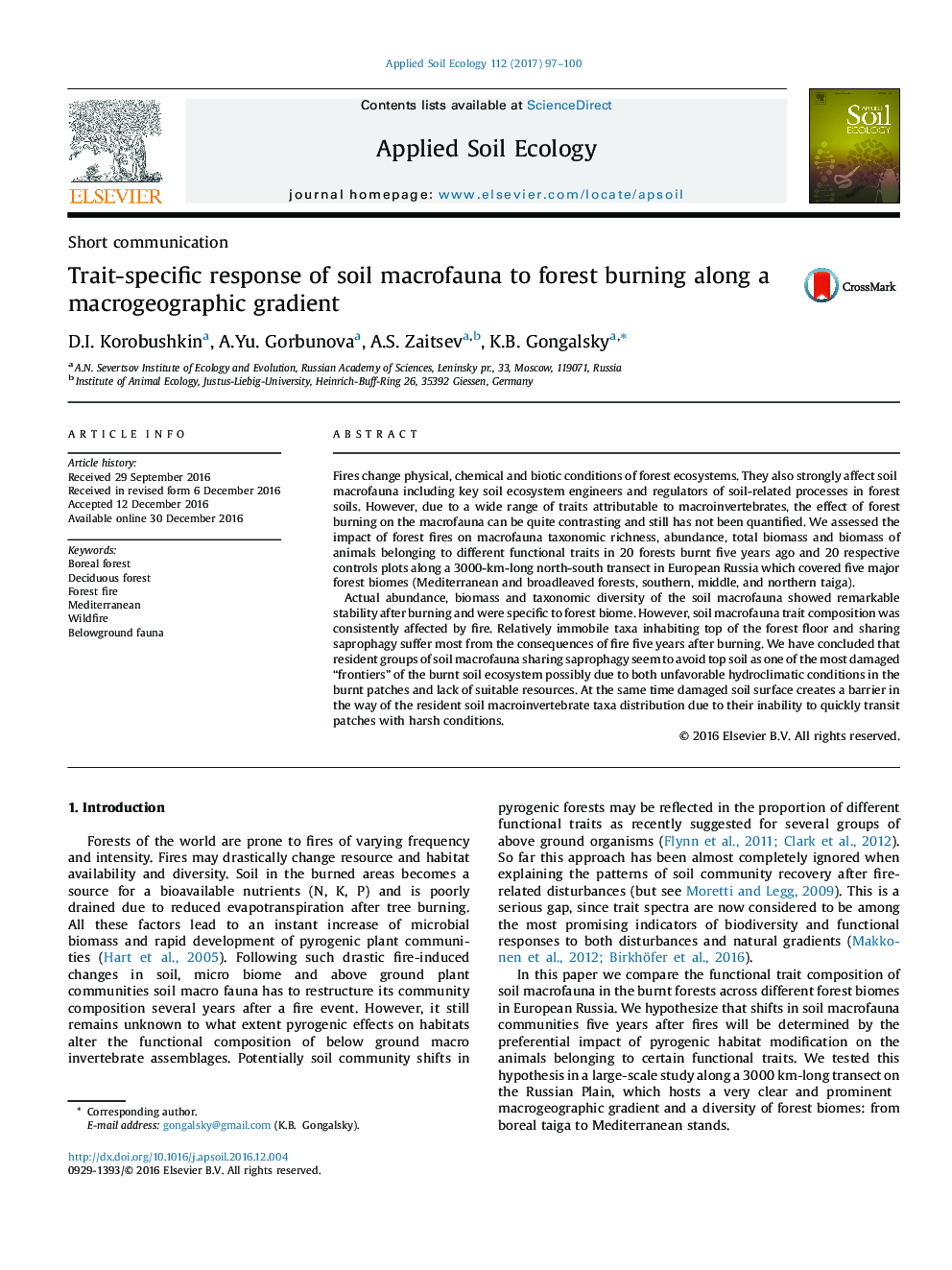| کد مقاله | کد نشریه | سال انتشار | مقاله انگلیسی | نسخه تمام متن |
|---|---|---|---|---|
| 5742763 | 1617771 | 2017 | 4 صفحه PDF | دانلود رایگان |
- We assessed soil macro fauna in forests burnt five years ago along a 3000-km-long north-south transect in European Russia.
- A bundance, biomass and taxonomic diversity of the soil macro fauna showed remarkable stability after burning and were specific to forest biome.
- In contrast, soil macro fauna trait composition was consistently affected by fire.
Fires change physical, chemical and biotic conditions of forest ecosystems. They also strongly affect soil macrofauna including key soil ecosystem engineers and regulators of soil-related processes in forest soils. However, due to a wide range of traits attributable to macroinvertebrates, the effect of forest burning on the macrofauna can be quite contrasting and still has not been quantified. We assessed the impact of forest fires on macrofauna taxonomic richness, abundance, total biomass and biomass of animals belonging to different functional traits in 20 forests burnt five years ago and 20 respective controls plots along a 3000-km-long north-south transect in European Russia which covered five major forest biomes (Mediterranean and broadleaved forests, southern, middle, and northern taiga).Actual abundance, biomass and taxonomic diversity of the soil macrofauna showed remarkable stability after burning and were specific to forest biome. However, soil macrofauna trait composition was consistently affected by fire. Relatively immobile taxa inhabiting top of the forest floor and sharing saprophagy suffer most from the consequences of fire five years after burning. We have concluded that resident groups of soil macrofauna sharing saprophagy seem to avoid top soil as one of the most damaged “frontiers” of the burnt soil ecosystem possibly due to both unfavorable hydroclimatic conditions in the burnt patches and lack of suitable resources. At the same time damaged soil surface creates a barrier in the way of the resident soil macroinvertebrate taxa distribution due to their inability to quickly transit patches with harsh conditions.
Journal: Applied Soil Ecology - Volume 112, April 2017, Pages 97-100
